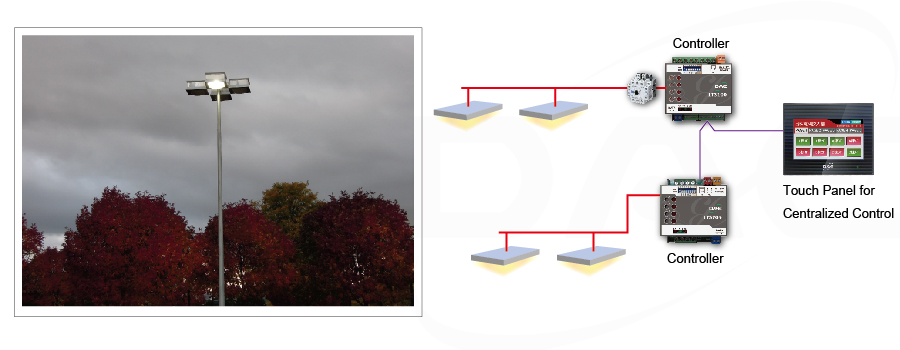Outdoor Lighting
Applications
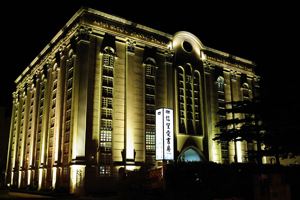
Building Facade Lighting
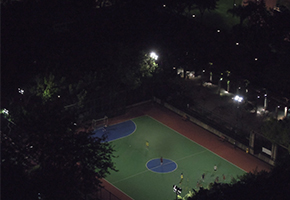
Ball Court Night Lighting
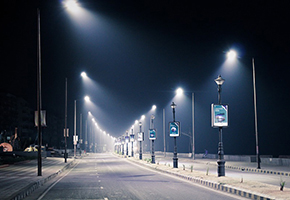
Street Lighting
- Applicable to places such as campuses, parks, sports arenas, marinas, bus terminals, etc.
- Outdoor lighting covers large areas, the wiring layout is spread widely, there are a wide variety of lamp types, the power consumption is huge and the operating time is long; the issue of when to turn the lights on or off in order to conserve energy is one of the primary concerns of the facility owner or manager.
Introduction
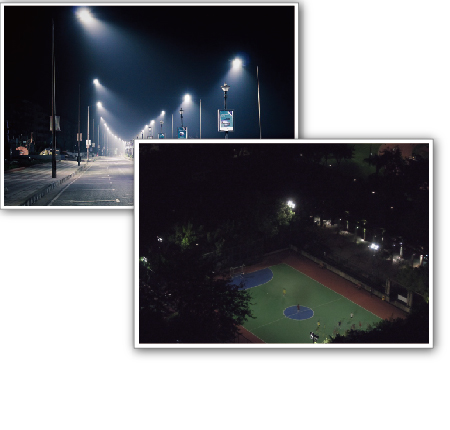
- Typical Outdoor Lighting
Building wall facade lights, flood lights, street lights, parking area lights, track lights, light posts, landscaping lights, billboard lights, fountain lights. - Outdoor Ball Courts
Outdoor ball courts have strong bright lights and consume lots of power, the cost of the lamps is hight, and maintenance costs is very expensive. They often use timers for automatic control, but there are times when no one is out to play but the lights still turn on and the energy is wasted, such as when the weather is too cold, when it is raining hard, or when school is out. - The time that the sun sets varies greatly for each season of the year, but with a timer for automatic control, the times the lights turn on is fixed throughout the year and may only be appropriate for one particular season but is either too early or too late for the other seasons. Being too early results in wasted energy and being too late results in the court being too dimly lit to play. The turn off time is also inappropriate and will result in the lights remaining on until dusk of the next day, which is thorough waste when no one is there to make use of it.
System Diagram
Outdoor lighting is often spread out and covers large areas, and there is a large variety of lighting types. Thus it is necessary to differentiate between areas and usage in designing for the wiring layout and method of control. Only in this way can one achieve the desired energy saving outcome.

Building Facade
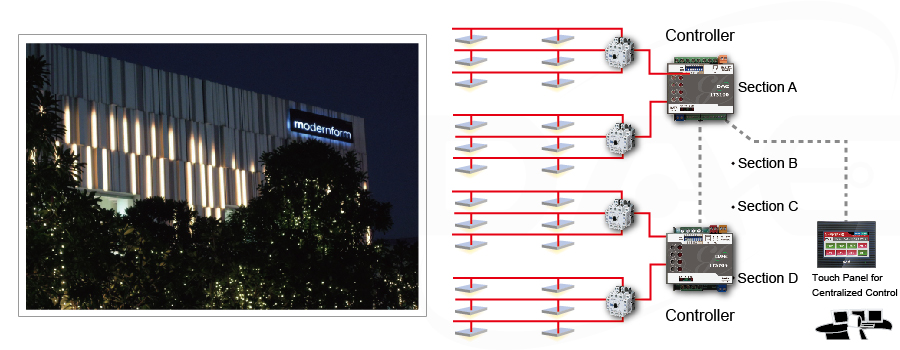
Each section of the building facade would have its own controller to control each of its lighting circuits; all the lighting would then be centrally controlled from a touch panel with a schedule set to automatically control the lights.
Ballpark Lighting
Each sub area would have its own controller to control the lights in that area, but control would be centralized with the touch panel, which also allows for scheduled control.
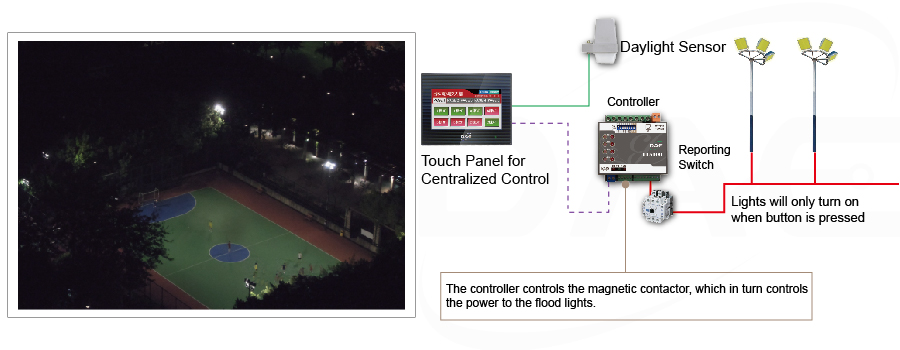
- Each sub area would have a special energy saving smart switch installed, when power is supplied, the lights do not turn on; it is only when the user actually needs the lights that they will press a button that will turn the lights on.
- The switch itself is signal only and does not carry power and hence there is no danger of current leakage.
Street Lighting
Each section has its own controller which is responsible for controlling the lights in that section. All the lights are centrally controlled through a touch panel which also provides automatic schedule control.
